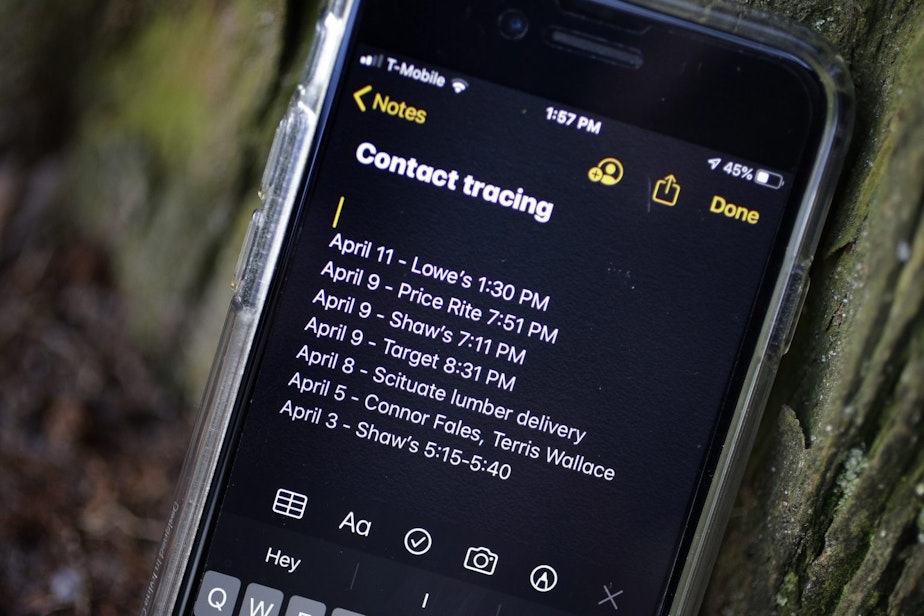Contact tracing: Key tool to fighting Covid-19 explained

One of the next steps in responding to the Covid-19 pandemic is contact tracing.
The process has been used to manage other outbreaks, like tuberculosis and sexually transmitted infections, but this response will likely be different.
There are three basic steps to contract tracing: Identification, listing, and follow-up.
Janet Baseman is a professor of epidemiology in the School of Public Health at the University of Washington. She said it all starts with a case investigation.
“If a person tests positive, they'd be called up by somebody from public health and asked who they had been in contact with," Baseman said. "Those contacts would be called up by public health in order to let them know that they had been named as a contact.”
Contacts are asked whether they have symptoms. If so, they’re tested and asked to quarantine themselves until the testing results come back. If not, they are given information on what symptoms to look for.
Baseman said contact tracing will be essential to reopening society and getting us back to something like normal.
Sponsored
“We're kind of at a phase where we're coming down the other side of this epidemic curve," she said. "Once we get to that place, contact tracing is a key opportunity for public health to engage with people who have been exposed to a known case.”
With 7.5 billion people on the planet, tracing the multitudes of potential contacts is a massive endeavor. Apple and Google are teaming up to use the Bluetooth technology on our smartphones to track coronavirus cases. Baseman welcomes the assistance.
“The traditional way that contact tracing is done is really labor intensive," she said. "Technology may be able to help ease the burden of labor for public health agencies.”
Asked if she thinks the effort stands much chance of success, Baseman said she’s hopeful.
“I would say the stakes are pretty high. It's going to take a lot of work, a lot of planning, and an investment by a lot of stakeholders. But I am optimistic. We've done some pretty impressive stuff here in Washington so far.”
Sponsored
Listen to the interview by clicking the play button above.





